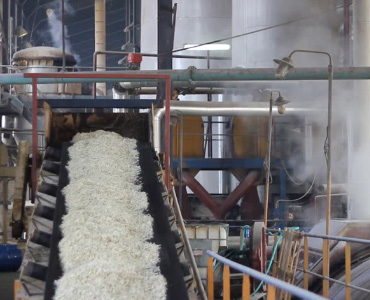Maximizar Rendimientos Y Minimizar Costos: Estrategias Avanzadas Para La Optimización Química Del Procesamiento De Azúcar De Caña
In the world of cane sugar handling, the search of taking full advantage of returns while concurrently lessening expenses stands as an awesome difficulty that calls for a strategic mix of advanced chemical optimization methods. The details of this venture look into the core of effectiveness, where every element of the process plays an important function in attaining optimal results. By discovering the details of chemical evaluation, enzyme application, pH control, filtration, and distillation techniques, a landscape abundant with possibilities for enhancement and development emerges. In the middle of this detailed web of approaches exists the guarantee of unlocking untapped capacity and reinventing the really significance of sugar manufacturing. Cane Sugar Processing Chemicals.
Chemical Analysis for Performance
Chemical evaluation plays an essential function in improving the efficiency of sugar walking stick processing by offering important insights into the composition and buildings of the raw products. By carrying out comprehensive chemical analyses on sugar walking stick samples, cpus can establish the precise concentrations of sucrose, glucose, fructose, and other components existing in the raw material. This information is vital for maximizing the different stages of the sugar walking cane processing chain, from crushing to formation.
Additionally, chemical analysis enables cpus to determine impurities such as natural acids, proteins, and minerals that can influence the high quality and return of the final sugar item. By quantifying these pollutants, cpus can execute targeted strategies to remove or minimize their impacts, ultimately enhancing the overall efficiency of the handling plant.
Additionally, chemical analysis helps with the surveillance of process specifications such as pH, temperature level, and viscosity, permitting cpus to make real-time changes to make sure optimum conditions for sugar removal and condensation. Generally, a comprehensive understanding of the chemical make-up of sugar walking cane is essential for making best use of yields, decreasing costs, and keeping high item high quality in the sugar production sector.

Enzyme Application for Increased Returns
With a tactical strategy to enzyme application, sugar walking stick cpus can substantially boost their returns while maintaining functional performance in the production process. Enzymes play a crucial function in sugar cane processing by damaging down intricate carbohydrates into less complex sugars, thus boosting the overall sugar removal performance. By incorporating particular enzymes customized to target the various components of sugar walking cane, such as cellulose and hemicellulose, processors can enhance the launch of sugars throughout removal.
Enzyme usage provides the advantage of taking full advantage of sugar yields from the raw material while reducing the energy and resources required for processing. Through mindful option and application of enzymes, sugar walking cane cpus can enhance their operations to attain higher yields and success.
Ph Control for Optimal Processing
Enzyme utilization for increased returns in sugar walking cane processing lays the foundation for resolving the important element of pH control for ideal processing efficiency. Keeping the proper pH level throughout various phases of sugar walking stick processing is vital for maximizing returns and lessening costs. pH control is specifically critical throughout the extraction and clarification processes. In the removal stage, keeping the right pH helps in attaining effective sucrose extraction from the walking cane. Controlling the pH throughout information aids in the rainfall of contaminations and non-sucrose elements, leading to a purer last item. PH influences the task of enzymes involved in review the failure of macromolecules, affecting the total efficiency of the procedure. By thoroughly keeping track of and adjusting the pH degrees at various processing actions, sugar cane cpus can boost sugar recovery prices, reduce chemical usage, and maximize the overall manufacturing procedure. Efficient pH control not just improves the top quality of the final item however additionally adds to lasting and affordable sugar cane handling operations.
Advanced Filtering Techniques
Executing sophisticated filtering techniques in sugar cane handling improves the performance and pureness of the last item with fine-tuned separation methods. By incorporating advanced filtration innovations, such as membrane filtration and activated carbon purification, sugar walking stick handling plants can attain greater levels of sugar recovery and boosted top quality control.

Turned on carbon purification is one more sophisticated method that aids in the removal of colorants, off-flavors, and residual impurities from sugar cane items. By utilizing triggered carbon's adsorption properties, this filtration approach boosts the quality and taste of the sugar, meeting the high criteria demanded by customers and sector regulations.
Energy-Efficient Distillation Approaches
Energy-efficient distillation methods are essential for optimizing the sugar walking cane handling market's energy usage while maintaining top notch product standards. Conventional purification procedures can be energy-intensive, bring about greater manufacturing prices and ecological influences (Cane Sugar Processing Chemicals). Executing energy-efficient purification approaches, such as vacuum cleaner distillation or molecular purification, can dramatically minimize energy demands while boosting overall process performance
Vacuum distillation includes decreasing the pressure within click over here now the purification system, which lowers the boiling factor of the fluid mix being refined. This reduction in boiling factor lowers the power required for vaporization, leading to power cost savings contrasted to conventional distillation methods.
On the other hand, molecular purification utilizes short course purification techniques under high vacuum conditions to separate compounds based on their molecular weight. This technique is especially reliable for heat-sensitive materials, as it runs at reduced temperatures, minimizing power usage and protecting item high quality.
Final Thought
